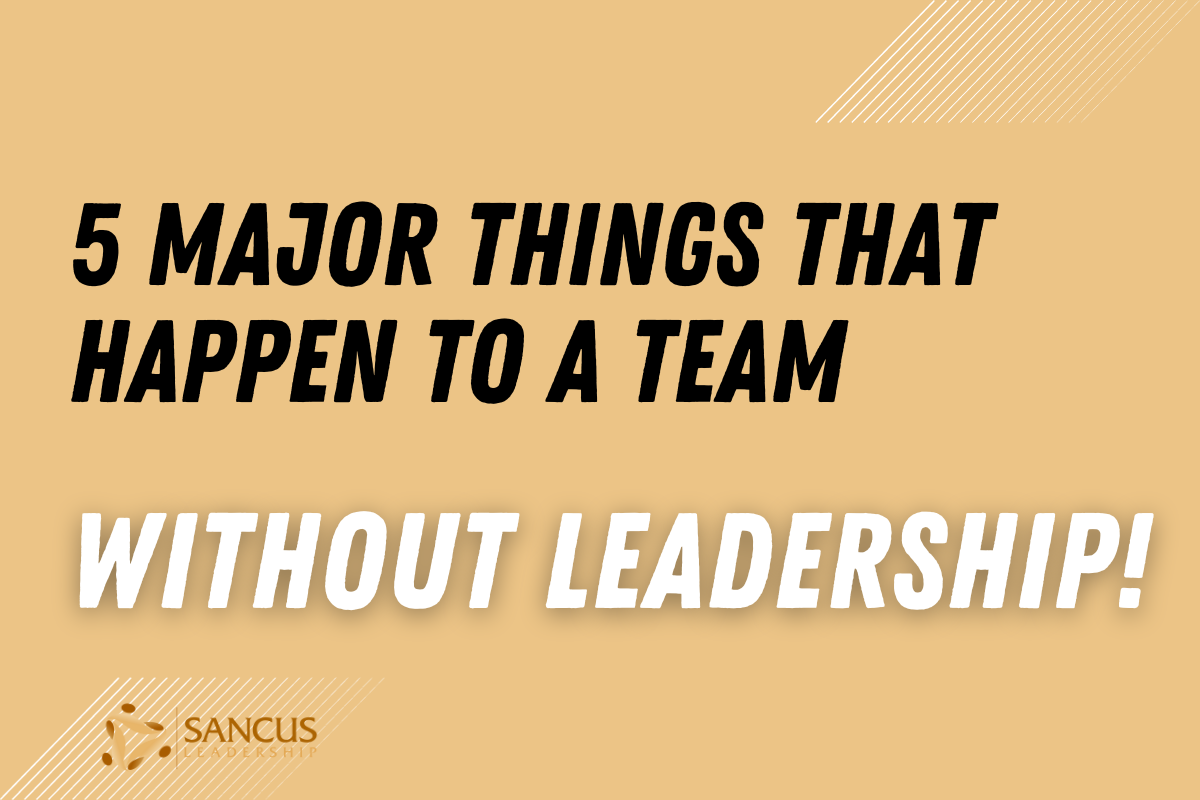When I work with people outside the military, they often think leadership is about telling people what, when, and how to complete a task. And that a team can work perfectly fine without leadership.
A team without leadership usually struggles with direction, communication, excess frustration, and ineffective decision-making. Leaderless teams also miss opportunities and deal with more obstacles than necessary.
I have been on both excellent and crappy teams during my twelve years as a military officer. Today, I want to share some experiences of how it is to work on a leaderless team.
1. Lack of a Direction
One of the formal leader’s main jobs is to figure out the team’s direction and communicate that clearly so that everybody knows how to make decisions within their responsibilities.
If the team doesn’t have clear priorities connected to a clear budget, how will people know how to spend their time and resources?
The lack of direction often means that a task must be redone, which employees usually find very frustrating.
2. Frustration
Without leaders on the team, it is up to each individual to discuss and try to communicate why they think something is the best. This wastes a lot of time and slows down productivity. If you add to that a lack of direction, it is almost impossible for the team to get along and start executing.
I have been a part of such teams a few times, which isn’t very pleasant.
A few years ago, a few of my friends, all of them ex-military, decided to go on a hike together through the Swedish mountains. They used to work on the same theme in the military but, on this trip, decided to go about it in a more civilian manner.
It took about two days of non-leadership until one of the guys said; Can’t we go back to you being the team leader (while pointing to the old commander). Everyone sighed in relief and happily agreed to return to the senior leadership style; even though this was a fun trip, the frustration and communication issues took away the enjoyment.
This same thing happens in the workplace; If we don’t carefully lead our teams, they will soon stop enjoying work and look for something else.
3. Communications Channels Breakdown
A good team leader will be able to filter out what is useless to the team; without this filter, they will quickly get overwhelmed with information.
A good team leader will be able to filter out what is useless to the team; without this filter, they will quickly get overwhelmed with information.
The team leader also has a good relationship with upper management, meaning that he or she can communicate the team’s needs in a way that is most likely to be accepted and generate benefits for the team.
4. Ineffective Decision Making
Everybody loves the idea of Democratic decision-making styles where everyone gets heard. But as we can see from the example with my friends, we only appreciate that style to a certain degree. At some point, we want a decision so that we can move on and get things done.
5. Missing Out on Vital Opportunities
When you ask people what a good leader is, a typical response is someone who understands what I’m going through. And someone who can support me in my work. In a military setting, this translates into digging trenches with the guys and climbing the hill to get an overview of the situation.
When you ask people what a good leader is, a typical response is someone who understands what I’m going through. And someone who can support me in my work.
Once up on the hill, it is the leader’s job to spot obstacles and opportunities and prepare plans for those. Each time the leader climbs the mountain, they better understand the situation and potential impact on the mission.
Once up on the hill, it is the leader’s job to spot obstacles and opportunities and prepare plans for those.
You might think that you could hand over that information to someone else, and you can rotate between who gets to climb the hill. But anyone who has tried it knows that handing over a feel for the situation is incredibly difficult without distorting the information.

Who Is Actually Leading the Team?

When I am training leaders and ask them who leads the team, almost everybody gets it wrong. Most people think there is only one leader on a team, the formal manager or team leader.
This is entirely backward.
In a reasonably well-organized team, people listen to each other; they might not like each other, but they understand the benefits of listening to someone who knows more than they do.
In this type of organization, the leadership constantly shifts depending on who has the experience and authority over the task.
Leadership constantly shifts depending on who has the experience and authority over the task.
Leadership can be, and should be, practiced by each individual on a team; leadership is raising your hand to offer your help when someone needs it or being the first one to try a new but perhaps scary solution.
Jordan Peterson, in this video, talks about how good leadership means finding people who want to contribute. Lead your team like a free society, not a dictatorship.
The Leaderless Organization

In the book Myth of Leadership: creating leaderless organizations (Amazon), published in 2004, the author Jeffrey S Nielsen concludes that rank-based leadership is power-hungry, commanding, and controlling and, therefore, should be exchanged for peer-based leadership.
Nielsen argues that peer-based leadership is collaborating, sharing, egalitarian, and respectful, quite the opposite.
I have read some of the theories on leaderless organizations, but just as in the case of the book mentioned above, the arguments are usually straw manned and then attacked. Hopefully, you have had the same experience as me and understand that rank-based leadership doesn’t have to be power-hungry, commanding, and controlling but can be stress-relieving and effective.



